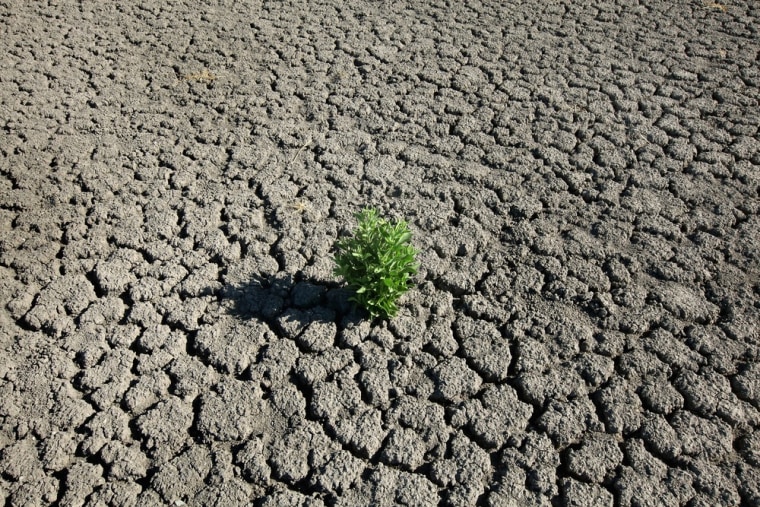Drought-hit Texas and Oklahoma, as well as other central states, were looking at yet another day of triple-digit temperatures on Tuesday, while the mid-Atlantic area was told it could expect a new blast of heat by Friday.
"The heat wave continues in the Central U.S. with warnings and advisories in effect for many cities," the National Weather Service warned. "Heat indices are expected to be between 100 to 115 degrees" in those areas.
By Friday, mid-Atlantic areas from Philadelphia, Pa., to Raleigh, N.C., can expect temperatures back in the upper 90s and heat indices between 105 and 115 degrees, weather.com forecast. The Northeast looks like it will be spared this time, weather.com added.
On Monday, the Northeast and mid-Atlantic were cooled off by storms but central states kept baking. With humidity factored in it felt like 112 in Killeen, Texas, and 110 in Greenville, Miss., and Duncan, Okla.
North Texas on Monday saw its 24th straight day at 100 or above and was expecting the same Tuesday. That would place 2011 at the number three spot of years with consecutive triple-digit days, nbcdfw.com reported.
To add heat insult to injury, forecasters are warning that above-average temperatures are likely to stick around going into the fall.
With the exception of the Northwest, most of the country will see warmer than normal temperatures in August, September and October, Weather Services International said in a new forecast . The Southwest, Rockies and southern and central Plains will be the most affected, the forecast warned .
"The summer heat has been more impressive and widespread than anticipated so far," WSI Chief Meteorologist Dr. Todd Crawford told Weather.com. "We don't foresee a significant change in pattern for the remainder of the summer, although the focus of the heat may shift slightly farther to the west in August."
Monday's thunderstorms delayed traffic at several major airports in the Northeast and mid-Atlantic, and caused flooding in the Washington, D.C., area.
Airports in the New York, Baltimore, Philadelphia and Washington reported storm-caused delays throughout Monday afternoon.
At least one vehicle was washed off a road in the Washington area, nbcwashington.com reported, and the area also saw lightning.
At its peak, last week's heat wave put some 132 million people under a heat alert and was blamed for as many as 34 deaths, according to the National Weather Service.
Three weekend deaths in the Kansas City and St. Louis areas were heat related, officials said, and New York City reported one heat-related death.
By early Monday, slightly cooler air from Canada drifted across the Midwest and the Northeast, bringing showers and thunderstorms.
A record 6.86 inches of rain fell in Chicago on Saturday, forcing the cancellation of flights and the closing of parts of some highways and train lines.
